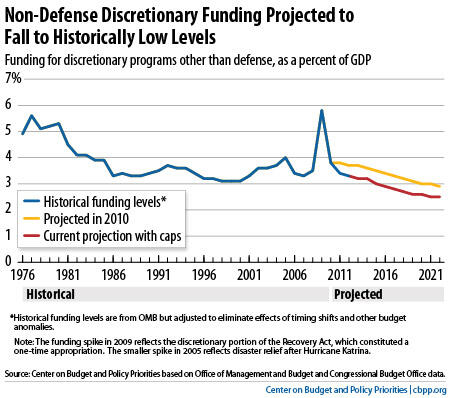Debates over how — and how much — to reduce projected deficits often overlook the fact that the first stage of large-scale deficit reduction is already in law. As our new report explains, legislation enacted last year, most notably the Budget Control Act, will produce $1.5 trillion in savings in discretionary (that is, non-entitlement) spending for fiscal years 2013 through 2022.
Update, November 9: we’ve updated this graph as explained here.
These cuts will shrink non-defense discretionary funding — which includes an array of domestic programs ranging from education to law enforcement, food safety, and environmental protection, as well as international programs — to its lowest level on record as a share of GDP, with data going back to 1976 (see graph).
The $1.5 trillion in discretionary cuts also will produce $250 billion in savings on interest payments on the debt, bringing the total deficit reduction achieved to date to more than $1.7 trillion.

